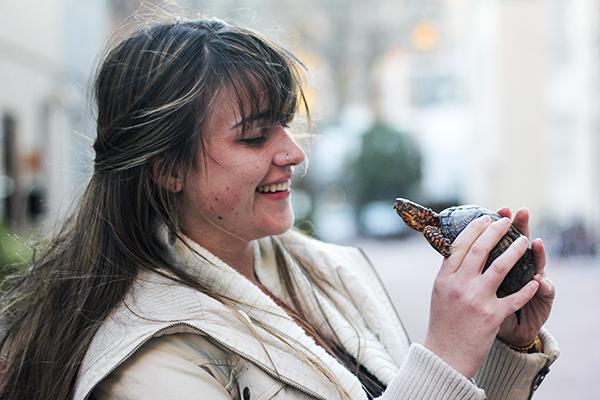Testing animals will soon join faculty in the Science and Engineering Hall.
A holding area for animals used in research will be added to the eighth floor of the complex, the Office of the Vice President for Research confirmed this week. A larger facility, located in the basement of Ross Hall, will continue to hold the majority of animals GW’s researchers currently use to test vaccines and medical devices.
At least 381 animals were kept on campus for research purposes during 2014, the last year the data was available from reports the University files with the U.S. Department of Agriculture.
The number of faculty who conduct animal research varies each year and all research involving animals must meet standards set by a national committee, according to the Office of the Vice President for Research. GW’s researchers primarily use dogs, guinea pigs, mice and pigs in their work.
Matthew Kay, an associate professor of biomedical engineering, said researchers in his department will sometimes use computer models to replicate patterns found in living tissues, but the programs don’t always translate into what’s actually occurring in the body. Because of that, he said the use of animals in his research can be unavoidable as there is no way to replicate the way certain living organs function.
“There’s almost no substitute for replicating that sort of complex physiology, so there really isn’t going to be a replacement for that anytime in the near future,” he said.
Experiments that have involved GW researchers include causing multiple organ dysfunction in rats before dissection, performing skin tests on three beagles who had been infected with hookworm and triggering heart attacks in 11 pigs before examining the hearts, according to documents compiled by People for the Ethical Treatment of Animals.
Igor Efimov, who was recently hired to lead GW’s new biomedical engineering department, said he tries to use human hearts – the subject of his research – as often as possible, but those specimens can be difficult to find.
“If you’re talking about cardiovascular disease and heart disease, unfortunately you cannot reproduce elements of the disease in a cell line, you need a heart,” he said. “And since we can’t grow a heart in a petri dish, it has to grow in a human being or an animal.”
Aleksandar Jeremic, an associate professor of biology, said he began his diabetes research using artificial insulin, but soon found that they only way he could understand the processes taking place was to use live animals.
“They have better care here than their counterparts in the streets,” he said of the mice in his lab. “We don’t do any kind of pain experiments, so again, they are treated with utmost care. So in that respect, in terms of ethical issues, I think at least for my project, I don’t see any problem.”
Marissa Price, the president of GW Animal Advocates, said she understood why some researchers were using animals but would ask administrators to consider removing animals from their work.
All 14 of GW’s peer institutions employ researchers who use animals as part of their research.
“I still think GW could reduce its animal subjects, at least with drug testing on the animals,” she said. “I would argue that is something that GW could work toward, eliminating the drug testing on animals.”







